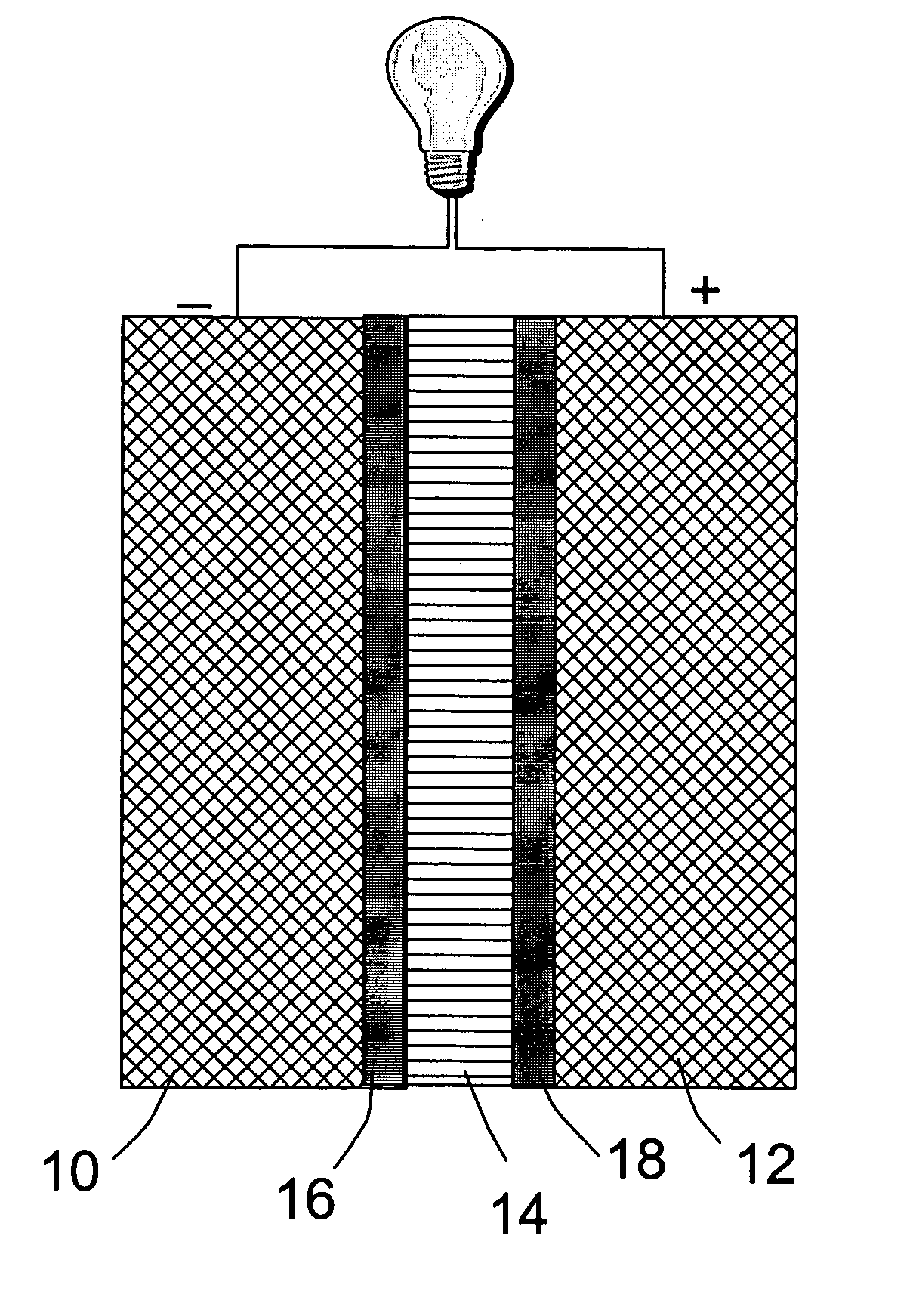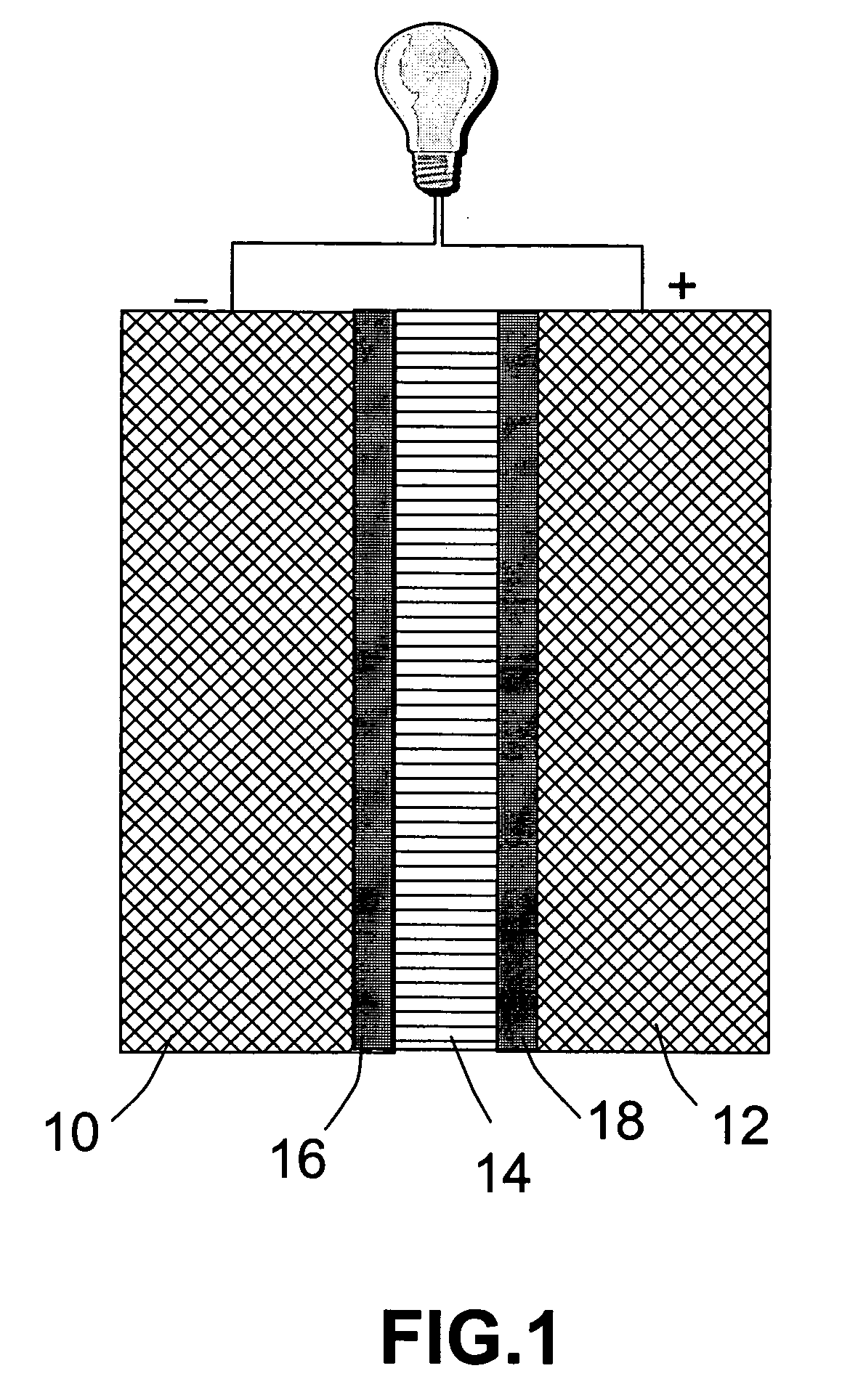Nano-structured ion-conducting inorganic membranes for fuel cell applications
- Summary
- Abstract
- Description
- Claims
- Application Information
AI Technical Summary
Benefits of technology
Problems solved by technology
Method used
Image
Examples
example 1
[0042] A fuel cell was prepared as follows. A sheet of carbon paper was coated on one side with a Pt—Ru catalyst to give an anode of 32 mm×32 mm in dimensions. A carbon paper was coated with a platinum (Pt) black catalyst to give a cathode also of 32 mm×32 mm. The Pt-coated carbon paper was then placed in a sputtering chamber to serve as a substrate. A piece of H3[P.Mo.O40].30H2O crystal was used as a sputtering target. A thin film with a thickness of approximately 0.5 μm was deposited onto the substrate for use as a thin solid electrolyte layer. This inorganic electrolyte membrane was then pressed against the catalyst side of the anode layer in such a way that the membrane is sandwiched between the anode and the cathode, with the catalyst layers on both electrodes being in contact with the electrolyte membrane. The assembly was joined together by pressing for 5 minutes under a pressure of 20 kg / cm2, to give a power generating section. The resulting assembly was held between a catho...
PUM
 Login to View More
Login to View More Abstract
Description
Claims
Application Information
 Login to View More
Login to View More - R&D
- Intellectual Property
- Life Sciences
- Materials
- Tech Scout
- Unparalleled Data Quality
- Higher Quality Content
- 60% Fewer Hallucinations
Browse by: Latest US Patents, China's latest patents, Technical Efficacy Thesaurus, Application Domain, Technology Topic, Popular Technical Reports.
© 2025 PatSnap. All rights reserved.Legal|Privacy policy|Modern Slavery Act Transparency Statement|Sitemap|About US| Contact US: help@patsnap.com



